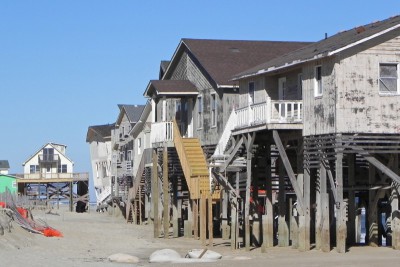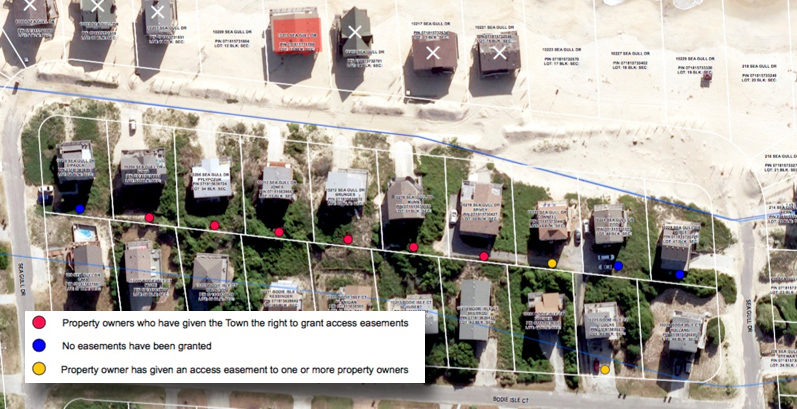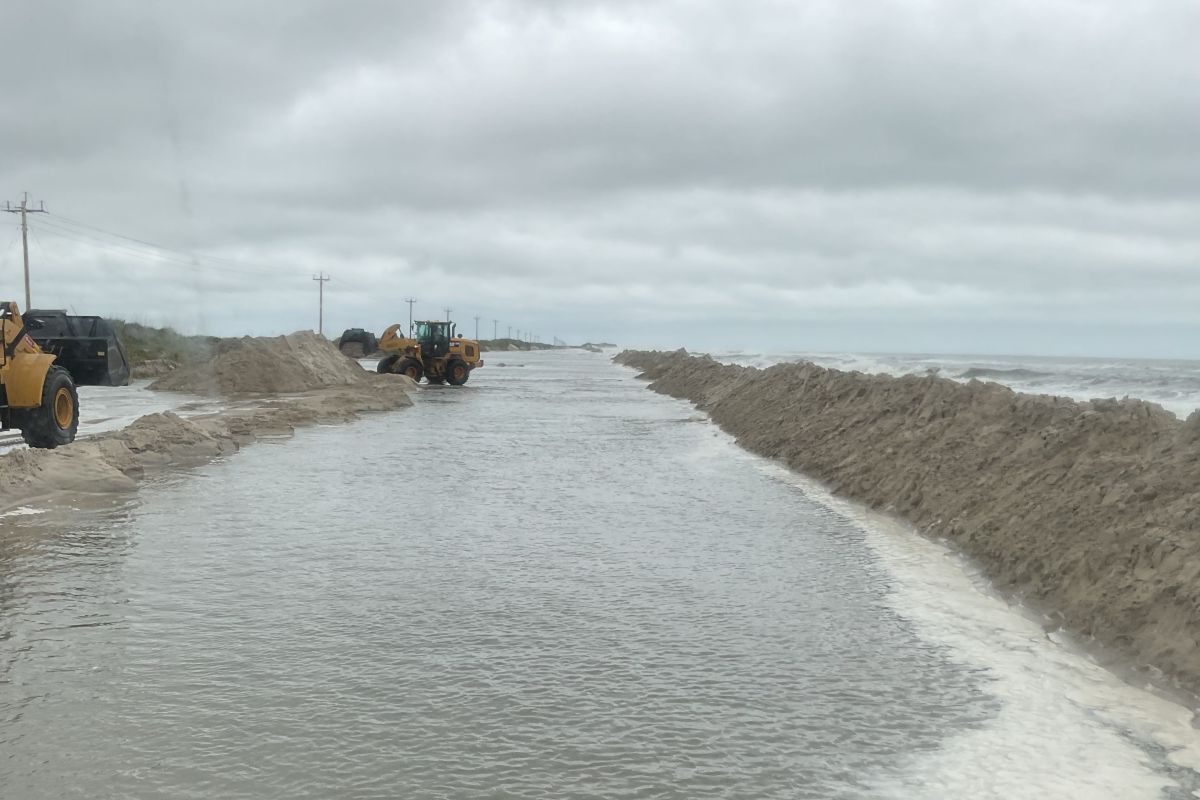Reprinted from The Outer Banks Voice.
NAGS HEAD – A decision on whether to close an oceanfront road or give property owners an alternative to pay for its upkeep will be the focus of a public hearing June 1.
Supporter Spotlight

The hearing is scheduled for 9 a.m. as part of the town commissioners’ meeting.
The road, Seagull Drive, became a symbol of the severe erosion in South Nags Head that validated the need for beach renourishment and was the center of a years-long legal battle over houses heavily damaged in a November 2009 storm. The storm scattered concrete septic tanks, pipes, wires and lumber across the beach and left the homes at the edge of the surf.
Now that all but one of the structures have been torn down, the town sees the road as a poor investment to serve the remaining houses that have become, by default, oceanfront properties.
Of the dozen or so owners of the remaining houses, three so far are unwilling to grant easements that would allow access on either end of the block. On the south end, three owners have worked out sharing access.
The best the town has been able to do is grade the right-of-way to make it reasonably passable. But the crew on a beach renourishment project in 2011 was forced to work around the old houses before they were torn down, so now the ocean regularly washes over the right-of-way during storms.
Supporter Spotlight
John Leidy, the town attorney, told the town’s board of commissioners last week that the town could consider a special assessment on the property owners to reimburse the town for maintaining the road. But the process, he said, would be cumbersome.
“It’s something the town needs to go through every time it makes an expenditure,” Leidy said. “It’s not a very mechanically practical way of doing this.”

A second and easier option would be to create a municipal service district with an annual tax on owners there to pay for maintenance, Leidy said. Such a district could be set up to also pay for hurricane protection and erosion control.
“We believe that repairs and improvements made to Seagull Drive if they constitute an erosion control mechanism or a flood or perhaps hurricane protection work — that that’s something that could be the basis for establishing an MSD,” he said. “Municipal service districts are a lot easier to establish and a lot more useful, or easier to use I should say, in raising funds. But there are some issues with respect to the level of maintenance that would be required in order to use that process.”
A legal mechanism known as easement by necessity would place the burden entirely on the property owners, Leidy said. It would allow an owner to acquire an easement over the property of someone else.
“The town would have no role in that particular kind of process,” Leidy said.
Six of the dilapidated houses were torn down after the town reached a legal settlement with the owners’ representative in March 2015. The town agreed to buy the homes for $1.5 million.
Roc Sansotta, owner of Cove Realty, sued the town in 2010 after Nags Head declared the row of houses on Seagull Drive an obstruction to public access and emergency vehicles.
The town, in a prior settlement, agreed to give another owner, Matthew Toloczko, $200,000 and a nearby lot worth $3,500 at the north end of the remaining row of properties to be used as a drain field for his house’s septic system.







